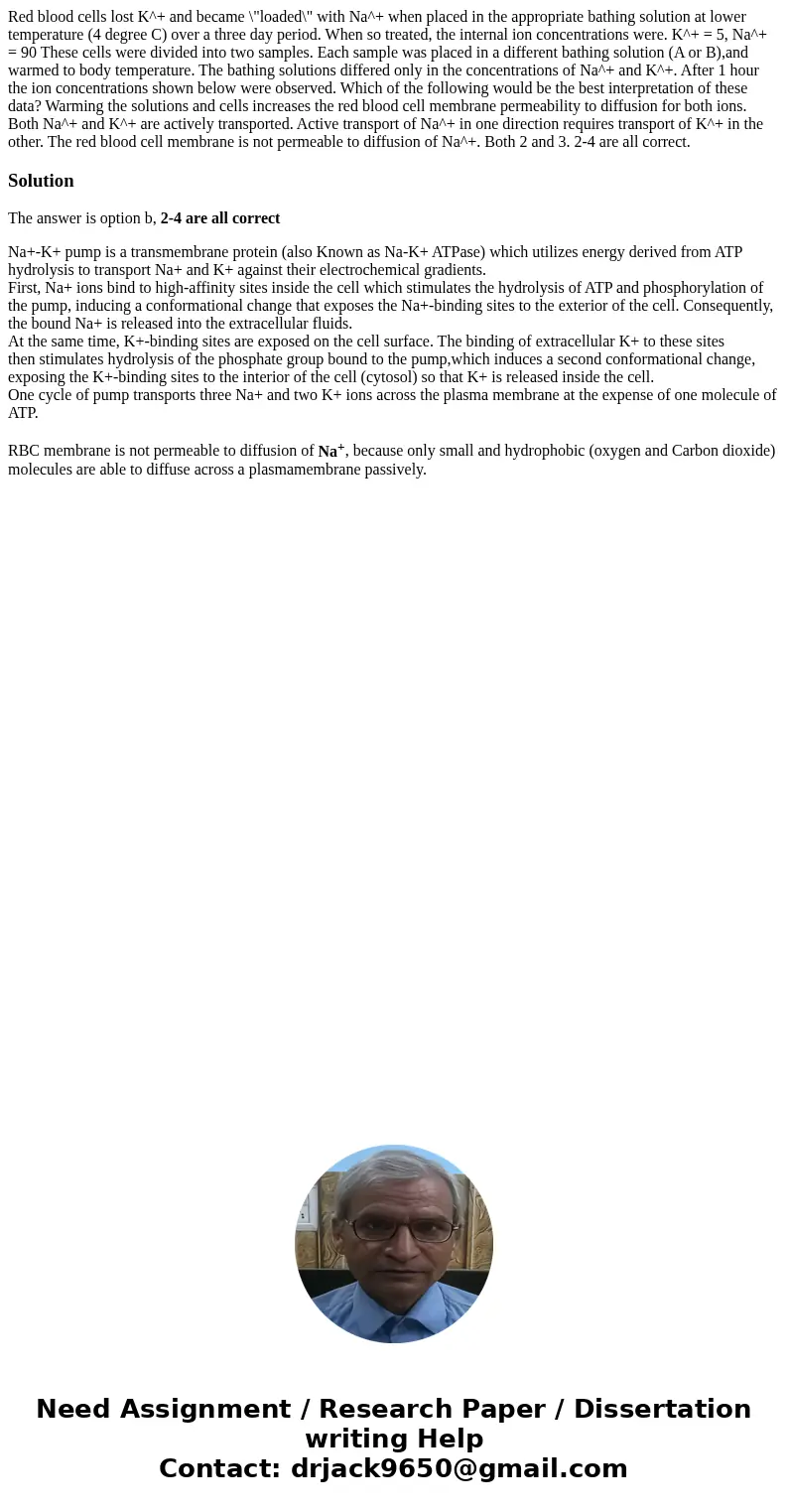Red blood cells lost K and became loaded with Na when placed
Solution
The answer is option b, 2-4 are all correct
Na+-K+ pump is a transmembrane protein (also Known as Na-K+ ATPase) which utilizes energy derived from ATP hydrolysis to transport Na+ and K+ against their electrochemical gradients.
First, Na+ ions bind to high-affinity sites inside the cell which stimulates the hydrolysis of ATP and phosphorylation of the pump, inducing a conformational change that exposes the Na+-binding sites to the exterior of the cell. Consequently, the bound Na+ is released into the extracellular fluids.
At the same time, K+-binding sites are exposed on the cell surface. The binding of extracellular K+ to these sites
then stimulates hydrolysis of the phosphate group bound to the pump,which induces a second conformational change, exposing the K+-binding sites to the interior of the cell (cytosol) so that K+ is released inside the cell.
One cycle of pump transports three Na+ and two K+ ions across the plasma membrane at the expense of one molecule of ATP.
RBC membrane is not permeable to diffusion of Na+, because only small and hydrophobic (oxygen and Carbon dioxide) molecules are able to diffuse across a plasmamembrane passively.

 Homework Sourse
Homework Sourse